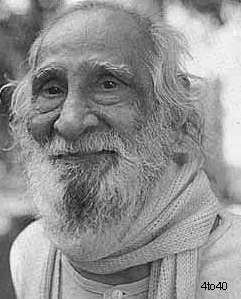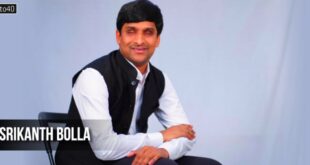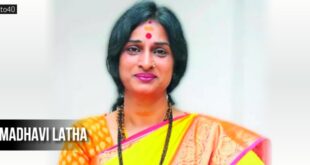 Shri Yogendra, was born on 18th November 1897. When his met Guru Pujya Shri Paramahamsa Madhavadasaji, a 119-year-old yogi from Bengal, he was still in college. The meeting with Paramahamsa Madhavadasaji made Yogendra a devoted believer of Yoga. He joined Paramahamsa Madhavadasaji’s ashram in Malsar city of Gujrat and started studying Yoga sincerely. He was a non-conformist and a very close bond developed between the Master and the student. The Guru taught him many things by direct experience. After completing his training, he decided to leave the ashram, in order to propagate the benefits of Yoga amongst the masses. Thus Shri Yogendra became known as the Father of Modern Yoga Renaissance. A firm believer of yoga, Sri Yogendra founded the institute to promote the science of Yoga throughout the world. He was also credited with the revival of the classical yoga ideals.
Shri Yogendra, was born on 18th November 1897. When his met Guru Pujya Shri Paramahamsa Madhavadasaji, a 119-year-old yogi from Bengal, he was still in college. The meeting with Paramahamsa Madhavadasaji made Yogendra a devoted believer of Yoga. He joined Paramahamsa Madhavadasaji’s ashram in Malsar city of Gujrat and started studying Yoga sincerely. He was a non-conformist and a very close bond developed between the Master and the student. The Guru taught him many things by direct experience. After completing his training, he decided to leave the ashram, in order to propagate the benefits of Yoga amongst the masses. Thus Shri Yogendra became known as the Father of Modern Yoga Renaissance. A firm believer of yoga, Sri Yogendra founded the institute to promote the science of Yoga throughout the world. He was also credited with the revival of the classical yoga ideals.
Shri Yogendra was also a brilliant poet. An influential person from Mumbai, Mr. Masani, once came across is poetry. Impressed with Shri Yogendra, he invited him to his home in Versova, Mumbai. Mr. Masani offered him his own house as an ashram. This laid the foundation of The Yoga Institute of Mumbai. The Yoga Institute one of the oldest organized Yoga enters in the world. The Yoga Institute of Mumbai is a non-profit organization. It aims at helping people in physical, moral and psychic development, with yoga as an aid. Shri Yogendra left the world in 1989, passing on his legacy to his son, Dr. Jayadev.
In 1918, Shri Yogendra established the Yoga Institute at Versova, Mumbai. A year later, he went to USA where he founded one more Yoga Institute in New York. The following year, his ailing father summoned Shri Yogendra back to India. He did the most unusual thing for a yogi – he got married to Sitadevi. Come to think of it, he was following the footsteps of ancient seers like Vasishta and Yagnavalkya. His wife, Sitadevi was introduced to yoga soon after her marriage in 1927. After two years of rigorous study, she became the Secretary of the Institute, and later, in charge of the Ladies’ section. She contributed articles to the Journal of Yoga and also authored a book entitled ‘Yoga Simplified for Women’. This book is ground breaking because it is the first authoritative book on yoga for women written by a woman. It paved the way for women to practise yoga, something that was prohibited until then.
Sitadevi faced immense criticism not only because she was a woman doing yoga, but also because she was a wife of a yogi. This yogi couple was challenging old traditions with their novel ideas. For instance, until then, yoga was confined only to yogis who practised it in the forests. But Shri Yogendraji made it accessible to all. No longer was it an exclusive domain of a Sanyasi.
Shri Yogendraji believed that yoga is the art of living. He wanted the common man to be able to follow it. So, he developed the breathing rhythm that accompany yogic postures and simplified yoga kriyas without diminishing their benefits. He wanted humanity to give as much importance to happiness and peace of mind as they did to material comforts. Yoga shows us how to find a balance between both and enrich our lives.
Shri Yogendraji propounded the virtues of yoga, especially its holistic approach that explored the body-mind connection. He told his students that all those who have the urge to study yoga must come with an open mind. Only then can it change their lives.
Shri Yogendraji passed way in the year 1989. But when he was in his early fifties, he handed over his legacy to his son Dr. Jayadev. Together with his wife Hansaji, Dr. Jayadev has introduced several group learning programmes that generate self-awareness. Indeed, they are a unique couple, united in their way of thinking and in their dedication to yoga. Today, Dr Jayadev (PhD Philosophy, University of Bombay) is the Head of the Institute, an editor as well as a teacher. His main concern is the teaching of classical yoga ideals, its historic context and its possibilities in modern life. Hansaji has a huge fan following. After all, she is the charismatic yoga expert of the popular television series ‘Yoga for Better Living’.
The couple has made yoga simple, meaningful yet experimental. It is a way of life for them. Unlike many teachers, who provide a lopsided view of yoga by over-emphasising either the physical aspects or the relaxation techniques, Dr. Jayadev and Hansaji have developed a conceptual framework that is really outstanding. First introduced by Dr. Jayadeva, Bhavas play a very important role on the path of Yoga. Regular and repeated practice of these techniques slowly enhances the accompanying Bhava into one’s personality. Bhavas literally translated, the word ‘Bhava’ stands for a feeling or attitude. In context of Yogic studies, Bhava indicates an accompanying attitude for a given technique or concept. All meditative asanas belong to this Bhava. In Yogic practices, there are four basic elements that one needs to understand in yoga: Dharma (sense of duty), Jnana (awareness), Vairagya (objectivity) and Aishwarya (attainment):
Dharma: Unlike the commonly believed connotation of ‘religion’, the word Dharma means “Duty”. At every point in life, one needs to understand what one’s duty is in that given situation, prioritise the tasks and then move ahead. It is believed that one who is always on the path of Dharma, is saved from all sorts of pains and sufferings, etc. In fact, Yoga even outlines a hierarchy of duties, one’s first duty is to self, then family and friends, place of work, society and finally, humanity in general. Often we tend to neglect this hierarchy, for example over-working without eating in time or eating wrong food, not resting sufficiently, or indulging into social work without looking after the family, etc. Neglecting this hierarchy, leads to several conflicts and problems at the intra and inter-personal level.
Jnana: In Yoga, Jnana refers to “Awareness and Knowledge”. According to ancient Indian philosophy, all that one needs to know and understand for a meaningful life is actually present within. However, Maya or illusion keeps pulling us into the external world. We keep busy in the world outside looking for a purpose, some meaning. This leaves us confused and frustrated. Jnana in Yoga begins with awareness about self, at all levels – physical, mental, emotional and spiritual. The components of this Bhava are concentration, co-ordination, training of senses, breath awareness and control, balance, etc. Asanas involving upward and sideward stretches, asanas for extremities of the body and pranayamas belong to Jnana Bhava.
Vairagya: Commonly understood as renunciation, this Bhava actually refers to detachment. For a householder, fulfilling his duties to family is very important and renunciation doesn’t necessarily take one to detachment. Vairagya actually leads a householder to a state of being ‘in the world but not of the world’. The components of this Bhava are humility, objectivity, reducing the ego, ‘let-go’ attitude, surrender, etc. All the relaxation asanas, forward bending asanas, head-low postures and asanas involving twist of the spinal cord have been classified under Vairagya.
Aiswarya: When one is truly on the path of the first three Bhavas, viz Dharma, Jnana and Vairagya, the feeling of achievement, satisfaction, the knowledge yet being humble refers to as the Bhava of Aiswarya. All this adds great of confidence in one’s personality. In fact, the confidence that one may experience without the first three Bhavas, when analysed carefully, is usually a superficial one which one puts up only as a show-off for others. This Bhava is difficult to understand theoretically, but is easier to experience through perseverance and faith. The components of Aiswarya are confidence, self-reliance, sense of achievement, etc. The Kriyas and all asanas involving backward bending of the spine belong to this bhava.
At the Yoga Institute, yoga is taught in such a way that the asanas are not mere mechanical exercises, but means to achieve higher mental states. The couple believes that though yoga sets high goals, they are attainable.
 Kids Portal For Parents India Kids Network
Kids Portal For Parents India Kids Network






